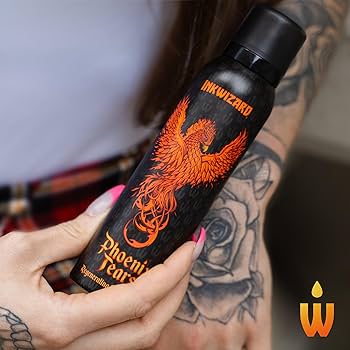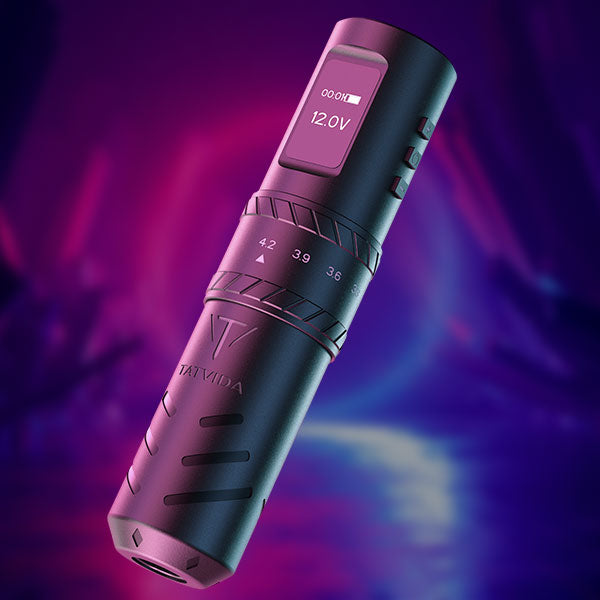– The article discusses how to set the correct voltage for a tattoo machine to achieve optimal results.
– It mentions that using the wrong voltage can either overwork the skin or result in a faded-looking tattoo.
– Different voltages are recommended based on the style of tattooing, such as line work or realism.
– Some machines, like the Cheyenne Sol Nova unlimited model, do not have a digital readout for voltage.
– The Inkjecta machine is suggested to use a 4mm stroke and 8 voltage for line work.
– Traditional machines may have a super low voltage, starting at one volt and gradually increasing.
– Faster hand speed can be achieved by gradually increasing voltage, with an example of using 10 volts for lining.
– For realism and smooth shading, a 3mm stroke and lower voltage around 8 is recommended.
– With experience, tattoo artists can distinguish between voltages based on the machine’s sound.
– Those new to tattooing are advised to stick to 8 volts until comfortable with faster hand speed.
– The article provides tips for tattoo artists on how to determine the appropriate voltage for their tattoo machines.
– It suggests practicing on fake skins to avoid causing prolonged damage to real clients.
– The article advises that when linework is not crisp, it may indicate that the hand speed is too fast for the voltage being used.
– Artists can either slow their hand speed or increase the machine’s voltage to match their hand speed.
– It emphasizes the importance of monitoring how tattoos heal, as scabbing or extra trauma to the skin may indicate that the machine is running too fast.
– The article notes that there is no specific number to aim for in terms of hand speed, but rather finding the voltage and hand speed that is most comfortable for the artist.
– This article provides information about quality power supplies for tattoo machines and lists the top 10 tattoo power supply units.
– It emphasizes the importance of a reliable and trustworthy power supply for optimal performance.
– It mentions that in the past, tattoo artists had difficulty finding functional power supplies and often used unsafe alternatives.
– However, the industry has grown, and now there are power supplies specifically designed for tattoo machines.
– The article recommends the Eikon EMS420 Power Supply as the best overall power supply for powering multiple machines and providing stable output.
– The runner-up option is the BRONC Professional Tattoo Power Supply, which is more affordable and supports both coiled and rotary machines.
– For those on a budget, the Dragonhawk LCD Dual Tattoo Machine Gun Power Supply is recommended as a good starting option for beginners.
– Wireless tattoo power supplies are a convenient option for tattoo artists working in limited spaces with a lot of wires.
– However, they may not be able to handle heavy-duty tasks like powering more than two machines.
– Dual power tattoo power supplies are designed for professionals and can support multiple machines working simultaneously.
– The voltage of a tattoo power supply determines the power output, with higher voltage allowing for more machines to be hooked up.
– Some power supplies have a voltage range of 1.5 to 2 volts, while more powerful ones can run from 10 to 20 volts.
– It is important to choose a power supply that is compatible with the tattoo machine being used and to prioritize safety by using a regulated power supply.
– The article discusses the importance of considering the compatibility of tattoo power supply units with different types of tattoo machines.
– Some power supplies work well with coil tattoo machines while others are better for rotary machines.
– It is important to check the purpose of the tattoo machine and the type of power supply needed.
– The number of spots for plugging in tattoo machines should also be considered.
– Prices can range from $25 to $500 for tattoo power supply units.
– There are two types of power supplies – regulated and unregulated.
– Regulated devices compensate for power fluctuations during operation, while unregulated devices are more affordable but not as safe.
– Portability is another factor to consider, especially for tattoo artists working in limited space studios.
– Wireless tattoo power supplies are available, which help to save space and avoid cable clutter.
– Some power supplies come with a screen, either as a readable screen or a touch display using LCD or LED panel.
– This can be helpful for people who have difficulties with readings.
– Overall, it is important to consider compatibility, price, portability, and screen options when choosing a tattoo power supply.

